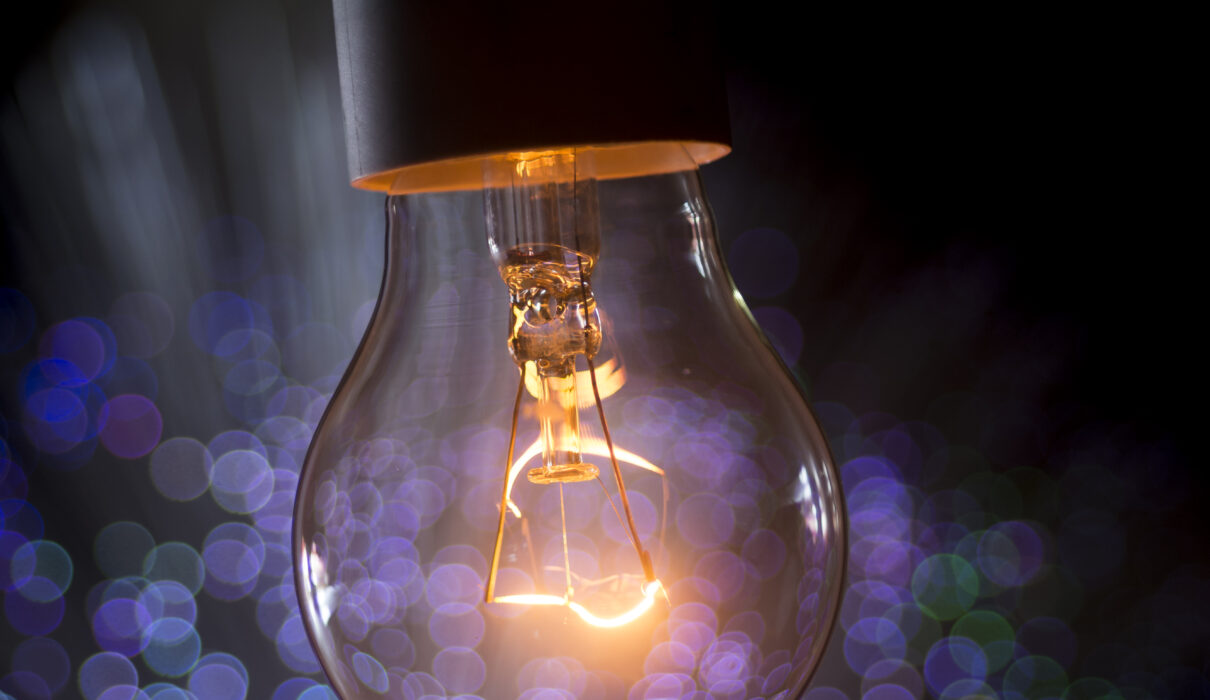Did you know that Thomas Edison was not the real creator of the light bulb? Find out about his role in the process and who was involved in this innovation?
The light you turn on in your home has not always existed. The electric lamp first appeared in 1809 and was not created by Thomas Edison, as is often thought. In this article we will tell you who invented the incandescent light bulb.
During the reading, we will come across different names of scientists and chemists who contributed to the discovery and improvement of the device. Examples of these were Joseph Swan and Warren de la Rue. The journey through the history of the light bulb will allow us to discover not only its true father, but also the evolution of this revolutionary discovery.
The antecedent of the light bulb
The origins of the light bulb can be found in arc lamps, created by Humphry Davy in 1808. This British chemist discovered that it was possible to generate electricity through the use of carbon electrodes. The problem with this light bulb was that the lighting was very intense and bothersome. For this reason, it was not appropriate for use indoors, although it was suitable for use in streets and public spaces.
So, an alternative to arc lamps had to be found, and they found it in incandescent lamps. It was Thomas Edison in the United States and Joseph Swan in England who ventured into lighting innovation. However, there are even antecedents to Humphry’s carbon lamp.
Who actually invented the light bulb?
In 1802, Humphry Davy created the world’s first light bulb by connecting batteries created by Alessandro Volta. According to the Revista Brasileira de Ensino de Física , in 1807 Joseph Swan explained that electricity is generated from chemical changes that occur inside batteries.
In this way, a high-power battery was used to generate current between two strips of carbon. This is how incandescent light came about. But we are still a long way from reaching the final light bulb that we all know.
Warren de la Rue
In 1840, British chemist Warren de la Rue invented the platinum light bulb. He did this by introducing a coil of platinum into an empty tube and passing a current through it. However, this innovation had a problem: platinum was very expensive, making it impractical for commercial use. In other words, it was impossible to mass produce it.
Joseph Swan
Joseph Swan was a British physicist and chemist best known for inventing the carbon lamp, for which he received his first patent in 1878. This was a year before Thomas Edison’s invention. This lantern worked by enclosing carbonized paper filaments in a vacuum-sealed glass bulb.
It is said that in February 1879, Swan illuminated a lecture hall with his invention. However, the reflector’s lifespan was very short due to the lack of a good vacuum. Edison was in charge of improving the materials and marketing the light bulb.
Thomas Edison
In 1789, Thomas Edison improved the design of the Swan lamp, saving on the high manufacturing and sales costs. He achieved this by using carbon filaments at a constant voltage of 110 volts. In this way, he avoided wasting electrical energy during the transport process.
The innovation introduced by Edison was the establishment of an electricity industry and market. In this sense, he created the General Electric company in Menlo Park, New Jersey.
What is happening with the light bulb today?
Despite the revolutionary discovery of Humphry Davy, who invented the light bulb, its use is currently being questioned. This is because the inputs used to manufacture and maintain electricity are harmful to the environment.
Furthermore, an article published by the Higher Council for Scientific Research indicates that 90% of the energy consumed by incandescent lights is transformed into heat.
Therefore, they have lost the efficiency they once had. Instead, LED lights are gradually replacing incandescent bulbs. Their benefits include being environmentally friendly, cheap, white and bright.
It is believed that in the coming years all the lighting we use will be based on LED lighting, whose technology consists of fluorescent tubes and stands out among the healthiest bulbs .
The legacy of pioneers in lighting
The history of the light bulb is a tale of novelty, collaboration and rivalry between brilliant minds. Throughout this article, we walk through the contributions of several key inventors, including Thomas Edison, Joseph Swan and Humphry Davy, who actually invented the light bulb.
It is common to associate Edison’s name with the person who created the incandescent lantern. However, in this text we show that he was responsible for a very important part in the creation of electric light. But he was not the first. Thus, it is crucial to recognize the importance of the collective contribution to technological advances.


